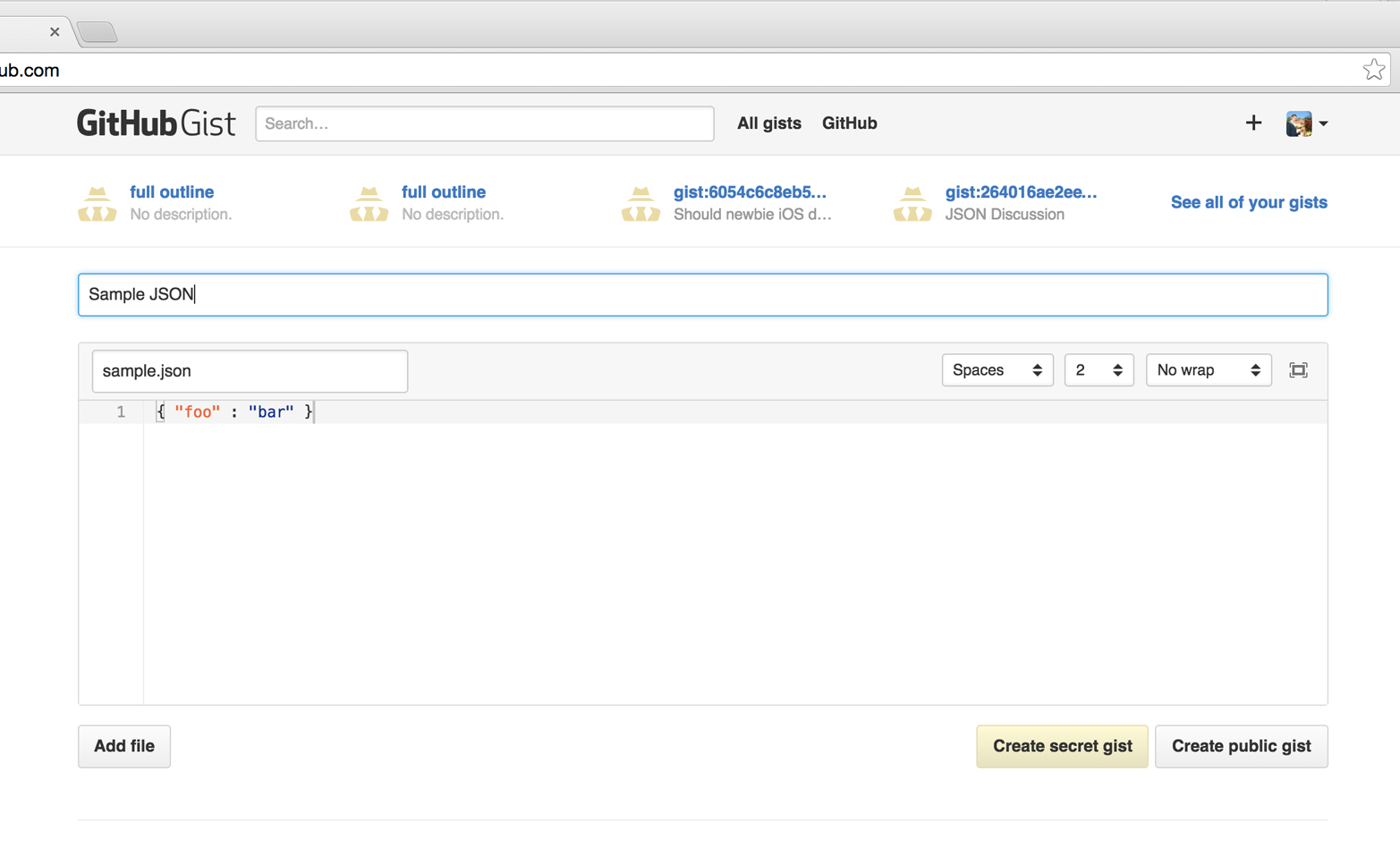Chapter 2. Gists and the Gist API
GitHub revolutionized software development by responding to a deep desire to share information. But calling it just âsharingâ does a disservice to the tools GitHub provides: these tools remove barriers to communication and streamline workflows. These tools also arose at exactly the moment when the information technology revolution forced companies to adopt more open technologies that assisted an emerging remote workforce.
Gists service part of this need: they permit intimate code sharing and reuse, refactoring, and experimentation in a way not served by the heavyweight tools predating it. In this chapter we will explore using gists to share code, and then build an application hosted as a gist that uses the Gist API.
Easy Code Sharing
Gists are straightforward to create. You copy a snippet of code into the large text box in the center, optionally enter in a description or filename, and then choose between a public or private gist. Once your gist has been created you are presented with a URL to share. Gists autodetect the language in most cases and syntax highlight according to the language when displayed as in Figure 2-1.

Figure 2-1. Documenting JSON using a gist
There are other services that do this: pastebin was the first, and there are many others that offer variances on code sharing. But gists by GitHub are not simply a pasting service. ...
Get Building Tools with GitHub now with the O’Reilly learning platform.
O’Reilly members experience books, live events, courses curated by job role, and more from O’Reilly and nearly 200 top publishers.

